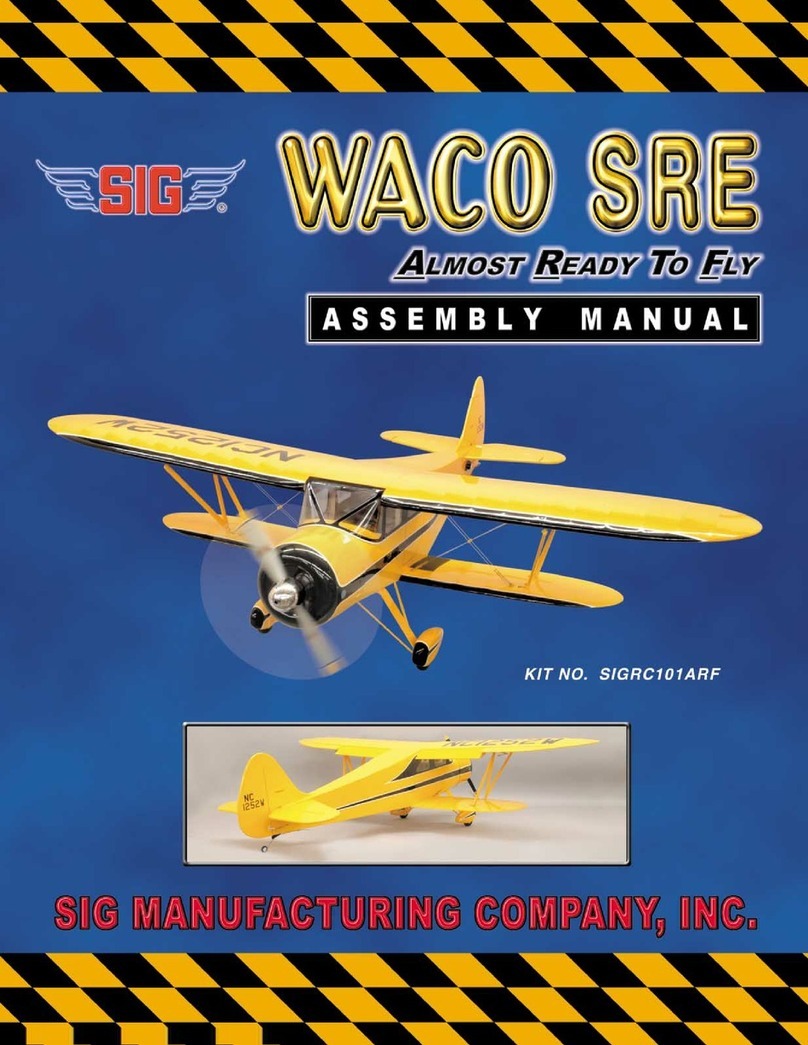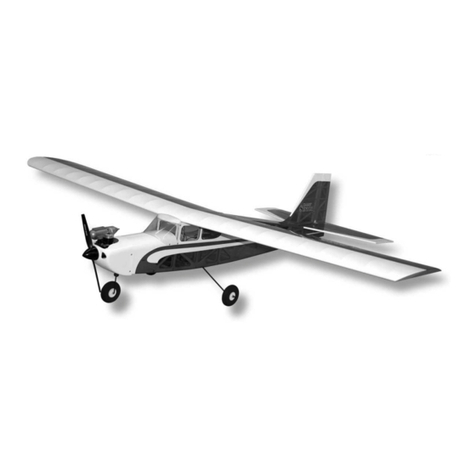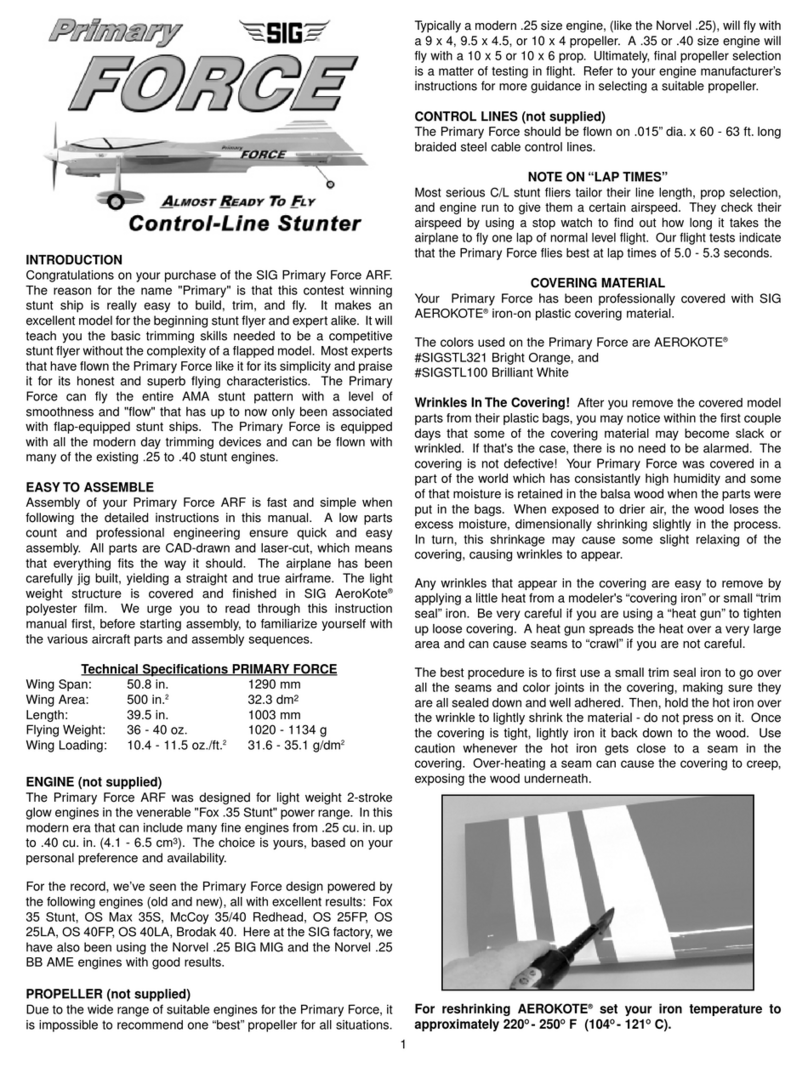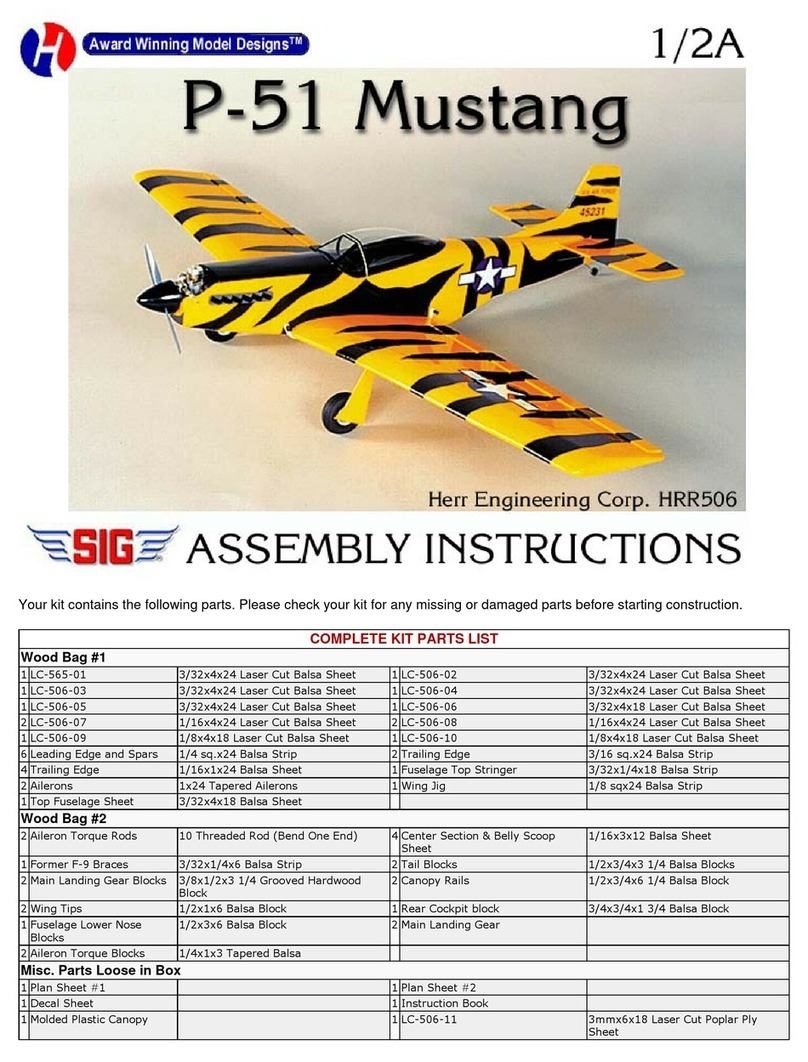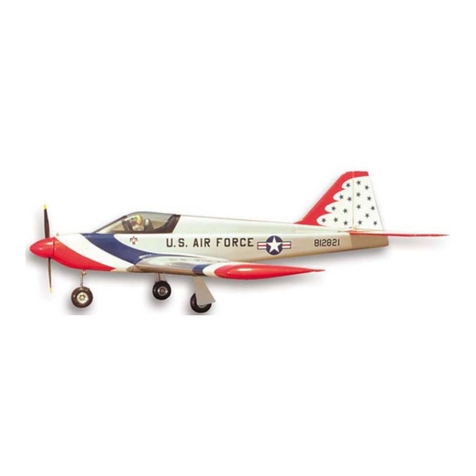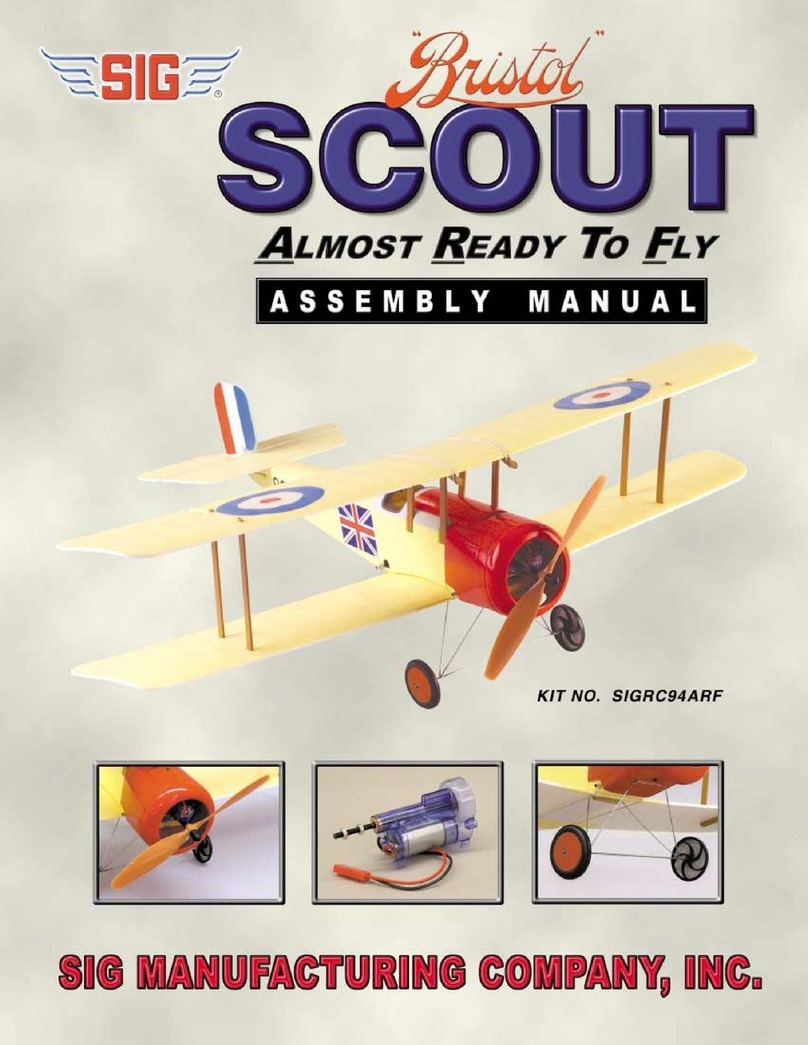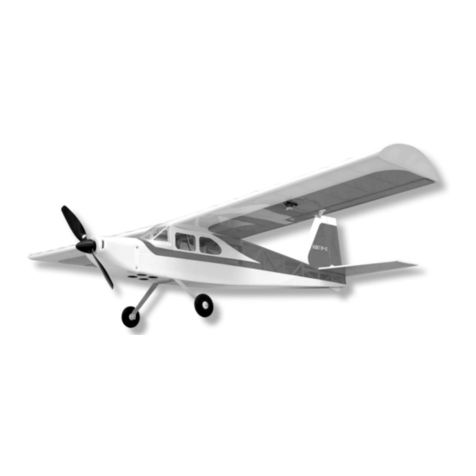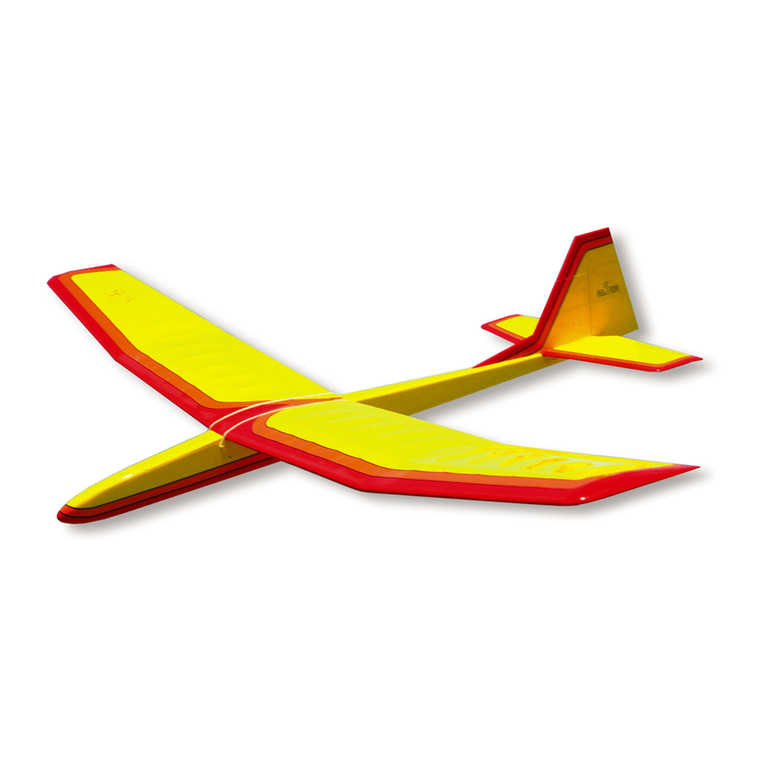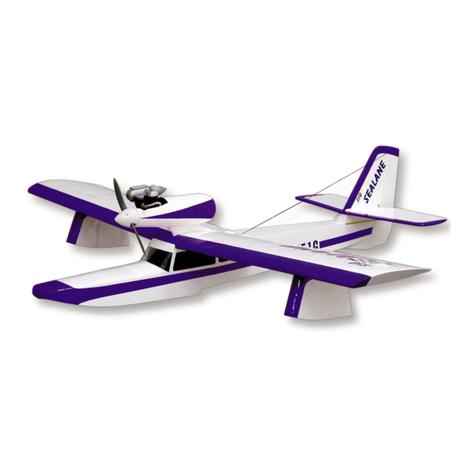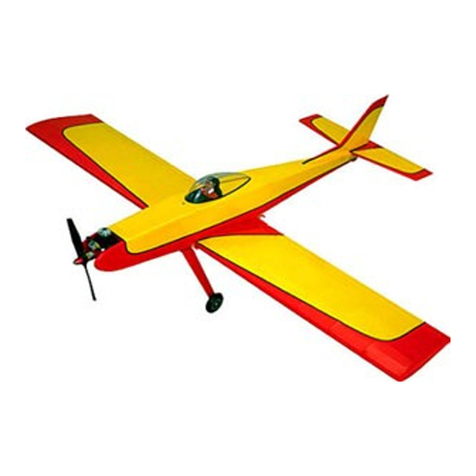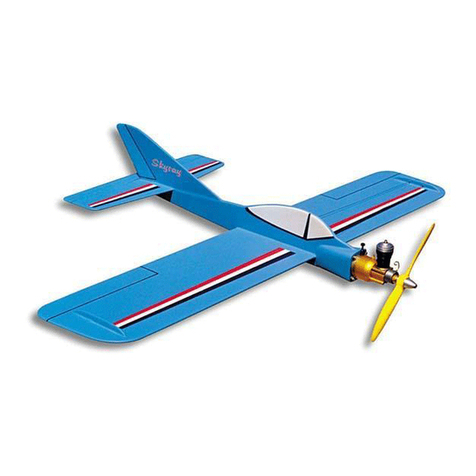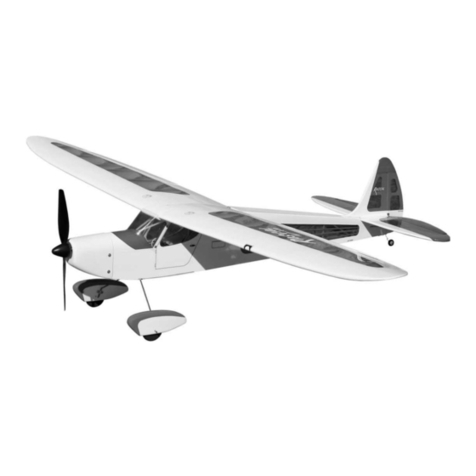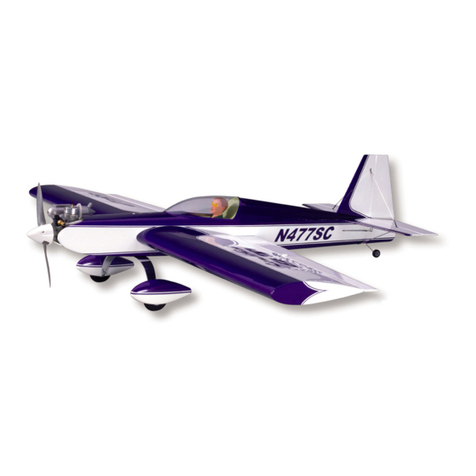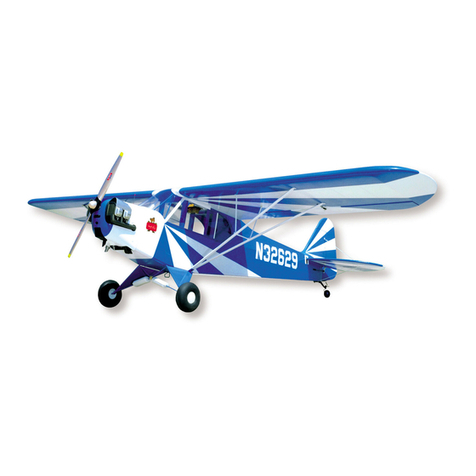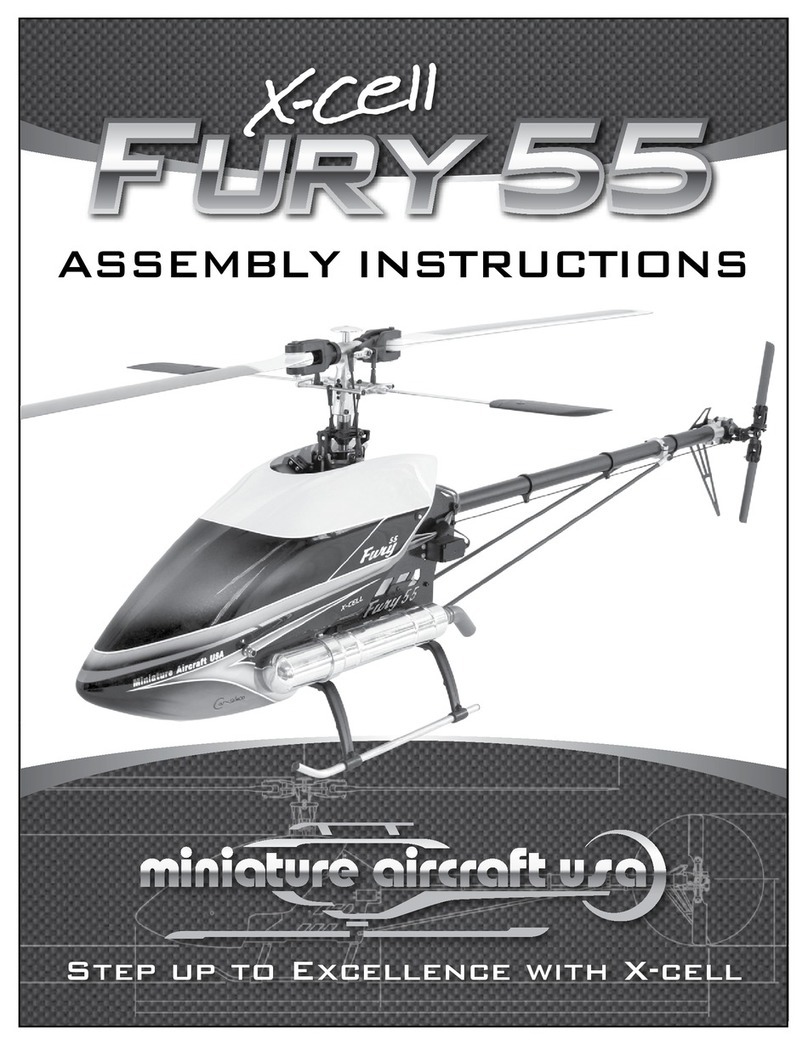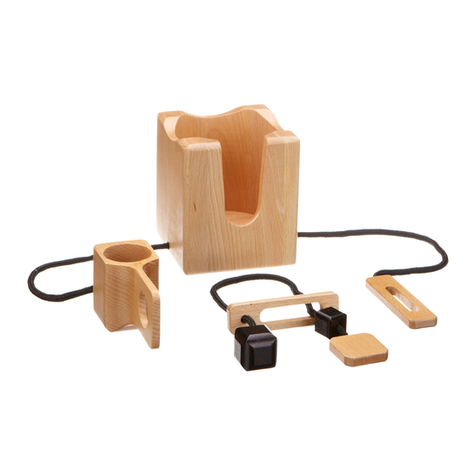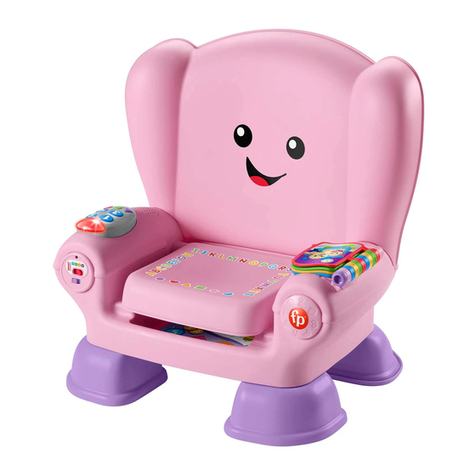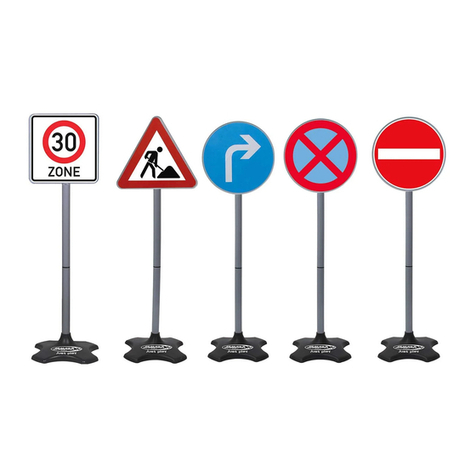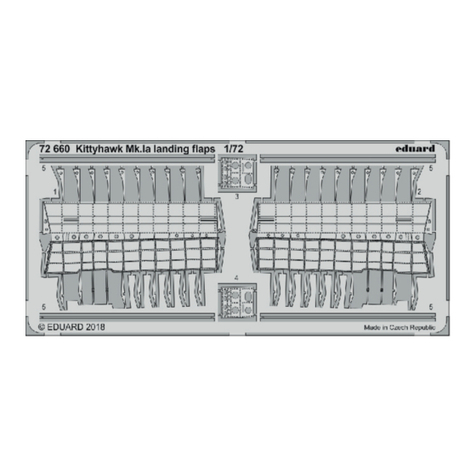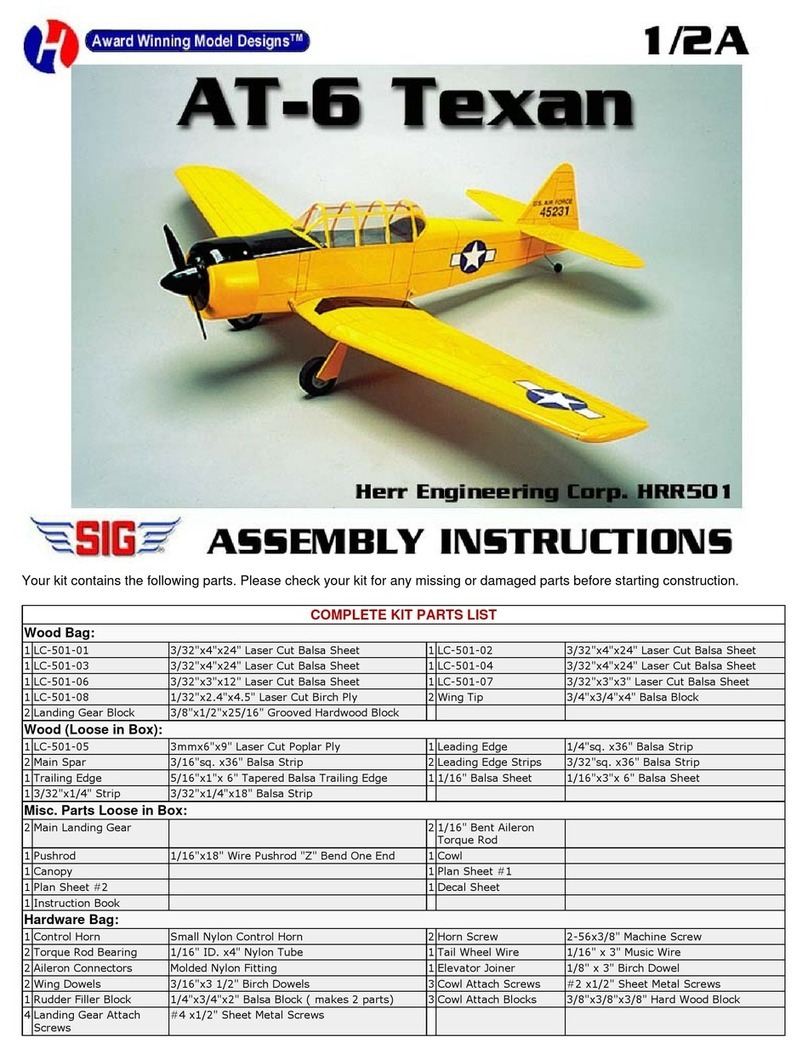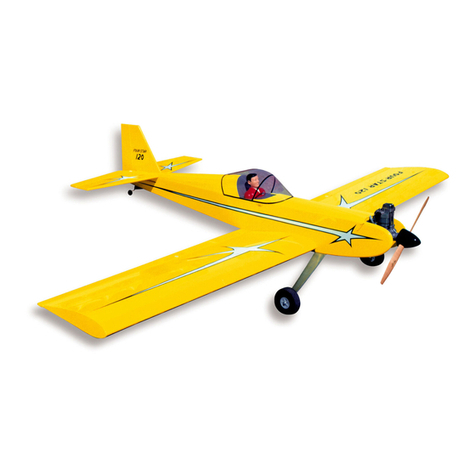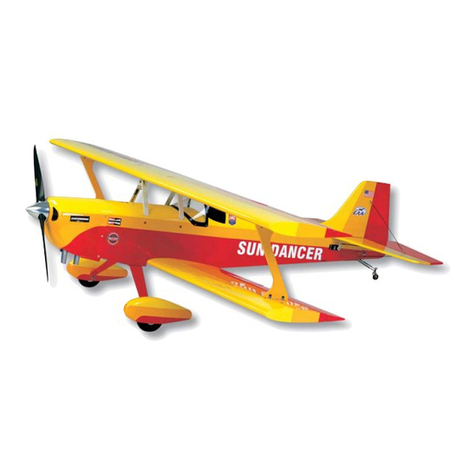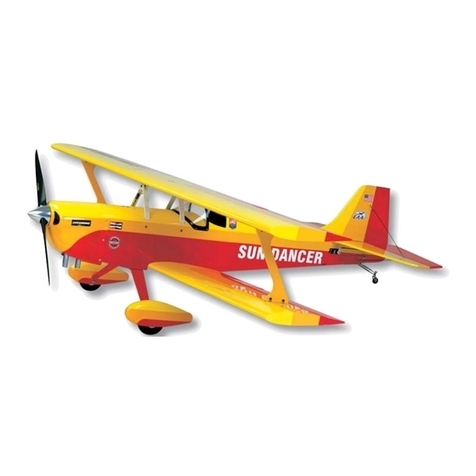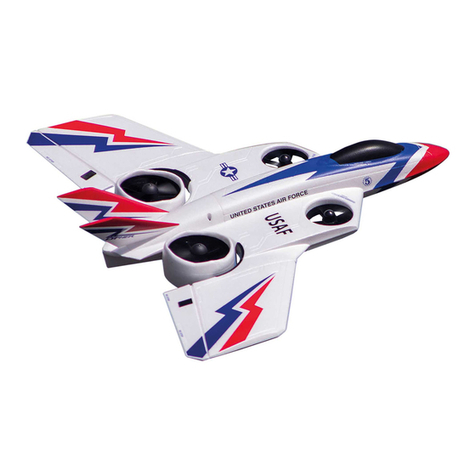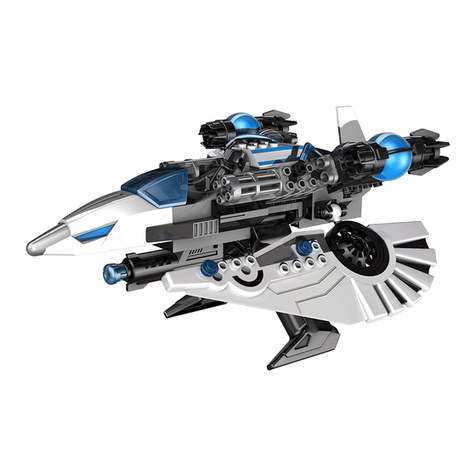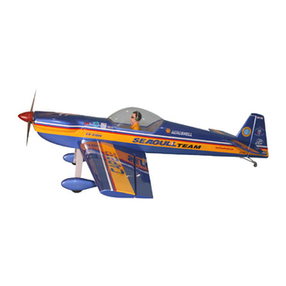cleaner allows the decal to slide easily into the desired position as
long as you don’t press down on it. Once you have it in position,
hold the decal lightly in place with your fingertips and use a paper
towel to gently dab the excess liquid away. Use a small squeegee
to now set the decal in place, removing all excess liquid and any
trapped air bubbles from beneath the decal. The SIG 4”Epoxy
Spreader - #SIGSH678 - is perfect for this job. Remove any
excess fluid with a dry paper towel and allow the decals to set
overnight. They will be solidly adhered to the model without any
air bubbles.
CENTER OF GRAVITY:
Establishing the correct Center of Gravity on this or any R/C model
airplane is critical to its ultimate success in the air. The
recommended starting balance point for the Rascal Forty ARF, is
located 3-3/8”behind the leading edge of the wing, immediately
next to the fuselage side. This is the location of the main wing
spar. We have flown this airplane with the C.G. location back as
far as 3-7/8”without any trouble. However, moving the C.G.further
back tends to make the elevators more sensitive. Remember that
the C.G. location is always determined with the fuel tank empty.
Using a simple balancing fixture, such as two dowels with rubber
tips to protect the finish, is the most accurate method for
determining and adjusting the correct C.G. location. However,
since the balance point is located at the main wing spar on this
airplane, yourself and a friend can lift the assembled model at the
wingtips to check the balance. The airplane should balance
perfectly level. If the nose hangs down, the model is nose heavy.
Likewise, if the model hangs tail down from level, it is tail heavy. If
either of these conditions exist, they should be corrected.
If the model is nose heavy, try shifting the location of the battery
pack a little further back to correct the condition. If the model is
still nose heavy, small stick-on lead weights - available from your
hobby shop - can be used to temporarily correct the problem.
Later, these can be placed inside the fuselage, through a hole that
can then be covered over with matching covering film.
If the model is tail heavy, move the battery pack as far forward as
possible to correct the problem. If the airplane still needs more
weight to balance, several things can be done:
•Heavier, after-market wheels
•Heavier, after-market metal spinner
•A larger, thus heavier, battery pack
•A brass Heavy Hub propeller nut -
available from Harry Higley Products
In the unlikely event that you cannot achieve the correct Center of
Gravity using the above methods, then stick-on lead weights
should be used.
FLYING:
If you have carefully followed the assembly instructions in this
manual, test flying your new RASCAL FORTY ARF should be a lot
of fun. When it comes to test flying a new model, we always advise
modelers to choose a calm day with little or no wind. These
conditions allow you to better evaluate and more accurately adjust
the trim requirements for your airplane. As we’ve mentioned
before, a good running, reliable engine is a must for the ultimate
success of your airplane. Take the time to solve any engine
problems before you try to fly.
Always make it part of your pre-flight routine to check each control
on the airplane, making sure the surfaces are moving in the correct
directions. Also check each control linkage to be sure they are
secure and that nothing is loose. With all the controls checked,
make a range check with your radio system, making sure
everything is working perfectly.
After starting and warming up the engine, taxi the RASCAL out to
the take-off position on the flying field, (holding up elevator during
the taxi will keep the tailwheel firmly to the ground). For take-off,
the airplane should be lined-up with the center of the field with the
nose pointed directly into the wind. Hold a little up elevator and
smoothly advance the throttle - do not slam the throttle full open all
at once. As the RASCAL begins moving forward, back off of the
up elevator input and use the rudder, only as needed, to correct
any engine torque and/or wind induced deviations from a straight
take-off run. Allow the airplane to lift off, using ailerons to keep the
wings level. Climb to a reasonable altitude before making any trim
changes.
Although not intended as a trainer, the RASCAL FORTY ARF is a
very forgiving design that allows you to fly at relatively low speeds,
giving plenty of time to learn the basics of R/C flight. With the
control movements set at the measurements provided in this
manual, the airplane should exhibit smooth, predictable control.
Try a few loops and rolls. You will find that the roll rate is not
especially high at the initial aileron settings but they can be very
axial with practice. Inverted flight is easy, requiring surprisingly
little down elevator for level flight. The RASCAL also performs nice
inside and outside loops, snap rolls, Immelmanns, stall turns,
Cuban eights, spins, and even a respectable avalanche. Of
course, it is not a pattern aircraft but with practice, there isn’t much
that it won’t do. As with any aircraft, getting consistently good
results is usually just a matter of practice. In all of this, we’ll bet
one of your favorite maneuvers will be those long, low fly-bys -
what a great looking airplane!
While still at altitude, throttle the engine back to idle. This will give
19




















